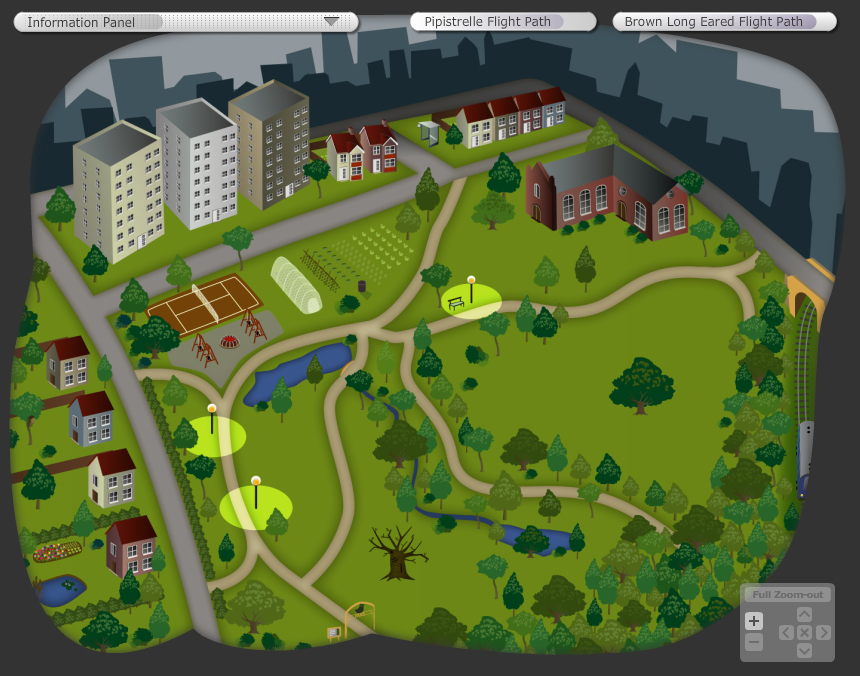The Bat Conservation Trust in the U.K. has a fantastic resource about urban bat habitat on their website. It’s called the Bat Trail and it’s an interactive website that features the many urban habitats and elements that can be beneficial to bats. It’s aimed at bats of the U.K., but the information is still relevant for many bats. It would be wonderful though to see this replicated specifically for North American bats.
There is a lot of information packed into this small landscape including tips, how to watch bats and videos. Among the habitats featured are:
- Modern Building: Describes the elements of construction that can be beneficial for bats including hanging tiles, window sills and cavity walls. It also describes the general spaces that bats like, such as the south or west sides of buildings where it’s warmer.
- Street Lights: Discusses how they can be both good and bad for bats depending upon the species. Shy bats tend to avoid the light and if it’s too near a roost it can influence the time they emerge. Some bats however will actively feed on the insects attracted to lights. There are also tips on on what to consider for outside lighting.
- Railway Lines: Perhaps one of the elements most overlooked in the urban environment as a possible habitat, railway lines act as travel corridors for bats the same way they do for us.
- Allotments (Community Gardens): Bats particularly like allotments because they provide valuable insects to feed on. Among the beneficial elements in community gardens are small orchards and compost heaps, both of which create ideal insect habitat.
- Streams: More insect habitat, streams provide food for bats as well as a travel corridor to foraging grounds. Open water also provides somewhere for the bats to get a drink.
- Dead Hollow Tree: All the crevices in dead trees make ideal bat roosting.
- Gardens: Private gardens can also benefit bats by providing food, shelter and water. Pale, night-blooming flowers attract night insects which provide food for bats. Bat Conservation Trust has a good page with many tips for attracting bats: Encouraging Bats.
Learn more about urban bat habitats by viewing the Bat Trail.







That’s awesome! I would love to see something like that for North American bats. Makes me want to put up a bat house.